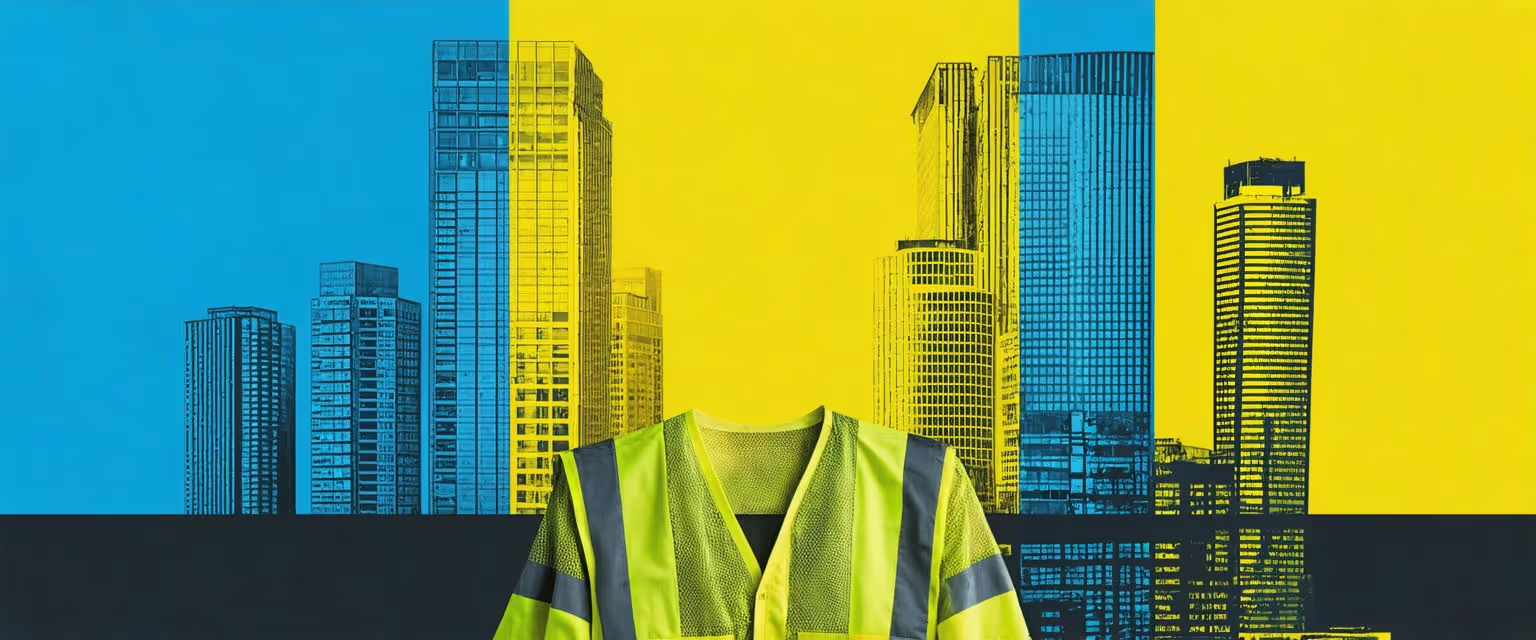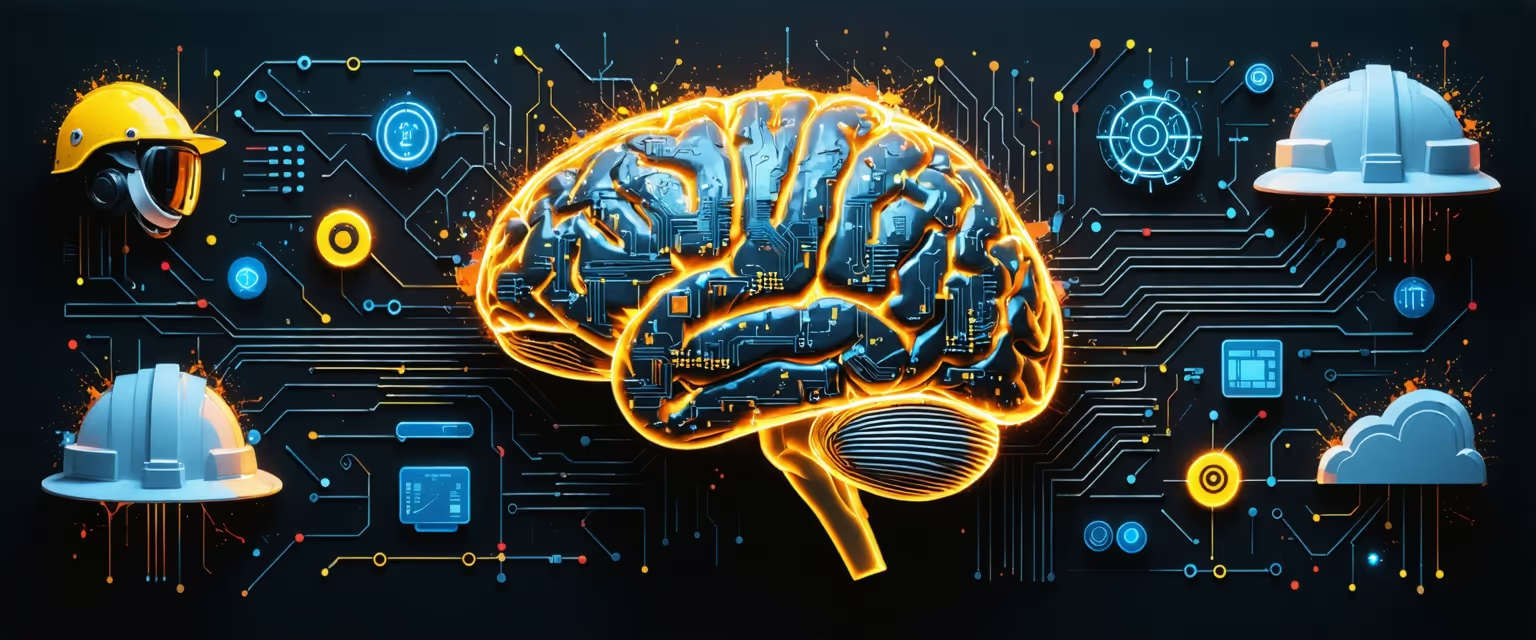All Posts
Construction - AI-Powered Construction Safety & Compliance
Enhancing Construction Safety: How AI Automates PPE Detection

Discover how AI automates PPE detection in construction, boosting safety compliance and efficiency. Learn about its benefits, challenges, and real-world implementations.
Ensuring worker safety while managing an ever-growing maze of data in construction can feel like an uphill battle. You're constantly grappling with multiple data sources—each with its own quirks and formats—while trying to meet tight deadlines and keep projects on track.
On top of that, maintaining compliance with safety protocols, such as proper use of Personal Protective Equipment (PPE), is critical. The relentless juggling act drains your time, saps productivity, and leaves little room for strategic decision-making.
What if you could eliminate these hassles and streamline your data workflows while enhancing safety compliance? Enter AI technologies that automate PPE detection in construction. By leveraging AI-driven solutions like Datagrid's data connectors, you can handle the heavy lifting of data extraction, integration, analysis, and now even automate PPE compliance monitoring.
How AI Automates PPE Detection in Construction
AI is making big strides in keeping workers safe, especially when it comes to ensuring proper use of Personal Protective Equipment (PPE). In fields like construction and manufacturing, AI systems are taking over the monitoring process, offering efficient and precise detection of PPE compliance.
Key AI Technologies in Automating PPE Detection
At the heart of AI-driven PPE detection is machine learning—particularly deep learning algorithms. Convolutional Neural Networks (CNNs) are essential here. They're adept at interpreting visual data from work environments using image-to-text conversion, figuring out if workers are properly outfitted with hard hats, goggles, gloves—you name it.
Trained on large datasets, these models process real-time video or images, spotting patterns and getting better over time. The more scenarios they encounter, the sharper they become, which is a real win for busy construction sites.
Training Machine Learning Models
These models learn from labeled datasets where each image indicates the presence or absence of specific PPE items. By augmenting data—rotations, scaling, lighting adjustments—we enhance the model's resilience. Many organizations turn to frameworks like TensorFlow or PyTorch for developing and training their models.
Transfer learning is another smart move, using pre-trained models on related tasks and fine-tuning them for PPE detection. It cuts down on data needs and speeds up training.
Utilizing Cameras and Sensors
Strategically placing cameras and sensors—thermal and infrared included—captures continuous visual data that feeds into AI systems. These devices handle low-light conditions and other challenges, ensuring the AI gets the information it needs for accurate data processing. When the system spots a compliance issue, it alerts site managers or safety officers right away.
Benefits of Automating PPE Detection
Automating PPE detection with AI is changing the game in workplace safety. It's not just about catching lapses—it's about automating complex workflows to create a safer, more efficient environment that benefits everyone.
Improved Safety Compliance
Real-time alerts from AI systems notify teams whenever someone isn't properly protected. This constant oversight reduces human error and streamlines the process, strengthening adherence to safety protocols. Knowing the system is always watching encourages workers to stay compliant, cutting down on accidents and injuries.
Productivity Enhancements
Manual PPE checks can slow things down and interrupt workflows. AI systems operate in the background, letting workers focus on their tasks without unnecessary interruptions. They run around the clock, freeing supervisors from tedious monitoring duties. With fewer disruptions, teams maintain momentum, leading to higher productivity across the board.
Financial Savings
While setting up AI systems comes with costs, the return on investment often speaks for itself. Fewer accidents lead to lower insurance premiums and less downtime. Automated systems reduce the need for manpower dedicated to manual checks. Over time, these savings can significantly offset the initial investment.
Comparative Analysis
Traditional safety checks rely on periodic inspections, leaving gaps where violations can slip through. AI-powered systems provide continuous oversight, never tiring or losing focus. This creates a more reliable, data-driven approach to compliance. Unlike periodic manual checks that might miss sporadic issues, AI catches every instance, ensuring swift action whenever there's a lapse in PPE use.
Challenges and Limitations
AI-driven PPE detection isn't without its hurdles. Tackling these challenges is key to getting the most out of the technology.
Technical Limitations in AI Systems
AI systems can struggle with complex environments and varying lighting conditions. Shadows, overlapping objects, and cluttered backgrounds can throw them off. Inadequate or biased training data might lead to false positives or missed breaches.
Ongoing research aims to enhance accuracy and make AI more robust in real-world conditions.
Financial Considerations
Implementing AI for PPE monitoring requires investment in hardware, software, and upkeep. Smaller organizations might find the costs steep. Cloud-based solutions and shared resources can help reduce barriers, but the price tag can still be a deterrent.
Resistance to Change
Some teams might hesitate to adopt new technologies, preferring the methods they're used to. Concerns about job displacement or increased surveillance can also play a role.
Developing Solutions to Overcome Challenges
These challenges aren't stopping progress. Advances in algorithms, collaborative funding, and flexible deployment models are making AI more accessible.
Ethical Considerations and Data Privacy
Rolling out AI systems successfully means respecting privacy and upholding ethical standards.
Monitoring and Data Collection Concerns
AI depends on gathering a lot of data. Constant video surveillance and sensor input raise questions about how that information is captured and used. If data meant for safety is repurposed without consent, it can erode trust and potentially violate privacy.
Privacy Laws and Guidelines
Regulations like the EU's General Data Protection Regulation (GDPR) and California's Consumer Privacy Act (CCPA) set clear rules for data handling.
Strategies for Data Protection
Collecting only what's necessary and anonymizing data helps mitigate privacy risks. Encrypting information and restricting access, coupled with regular staff training, keeps sensitive data secure.
How Agentic AI Simplifies Construction Task Automation
For construction project managers dealing with complex work, streamlining tasks can make a world of difference. Datagrid's data connectors and agentic AI seamlessly integrate with your essential construction software, automating routine documentation and daily workflows so you can focus on the bigger picture.
Imagine connecting Procore, PlanGrid, or Autodesk BIM 360 directly to Datagrid's AI-driven platform. Suddenly, RFPs, submittals, change orders, and daily reports flow between systems, thanks to AI-driven data entry. AI agents extract data from bid documents, compare them with historical specs, and alert you to potential issues. They track permit statuses and keep you on top of deadlines.
Datagrid goes further by integrating with tools like Microsoft Project, Primavera P6, and financial platforms such as Sage 300 or QuickBooks. Your team gets real-time insights into scheduling, resource allocation, and budgets—all in one place.
Document management, safety oversight, and communication channels are streamlined through automated document processing, reducing risk while saving time. Managers gain valuable insights powered by AI, freeing them to make strategic decisions and strengthen client relationships.
Simplify PPE Detection Automation with Agentic AI
Ready to transform your construction project management with AI-powered automation? Datagrid is your solution for:
- Seamless integration across Procore, PlanGrid, BIM 360, and other major platforms
- AI-driven RFP analysis and bid management
- Automated submittal and change order processing
- Real-time project insights and schedule optimization
See how Datagrid can enhance your construction management processes.












